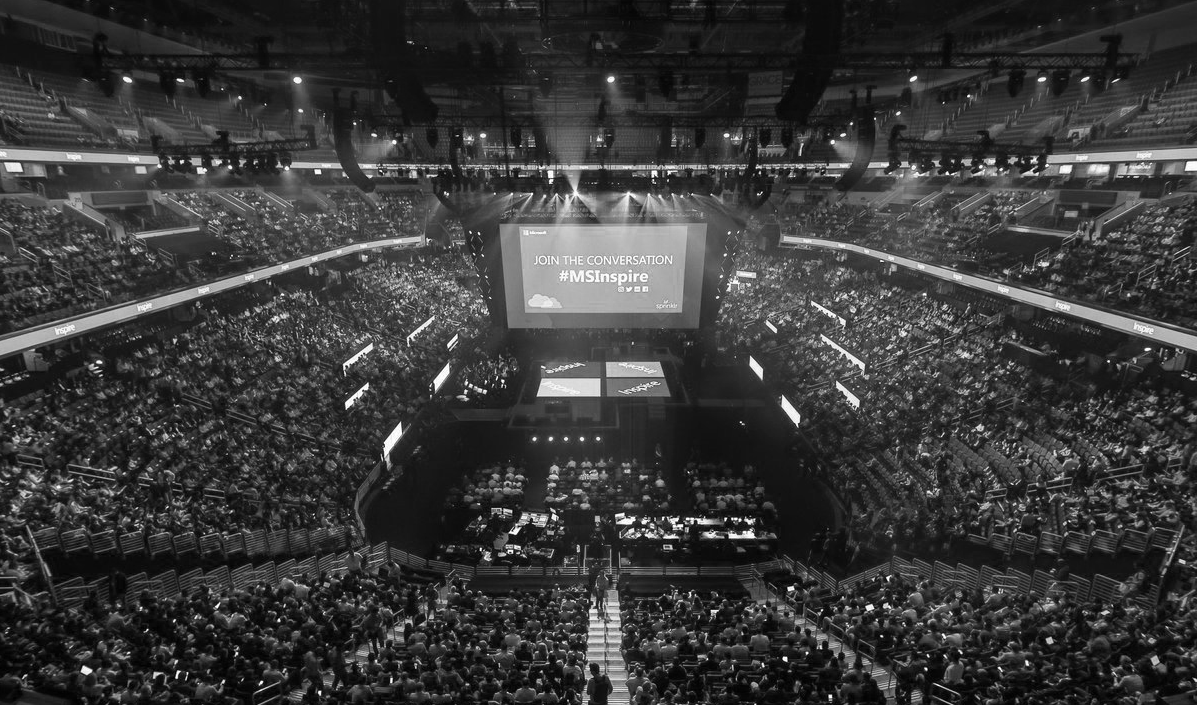Devoteam attended Microsoft Inspire 2019 from July 14-18 in Las Vegas. Microsoft Inspire is where partners meet to connect, collaborate and celebrate as one community. In this blogpost, our Practice Manager Microsoft Cloud, Joey Bergen shares his experiences of the conference.

Saturday evening I arrived in my hotel in Las Vegas after a flight of 15 hours. Because Microsoft Inspire is all about networking for me, I went out for a drink to see if I could find other attendees. At an Irish pub nearby, I came across a live rock performance. Shortly after I found my seat, two Germans asked if they could join me and we quickly found out that we were there for the same event, Microsoft Inspire. We discussed our expectations and general aspiration of the event. We all anticipated an update on Microsoft’s 2020 strategy and leadership.
July 14: the day before
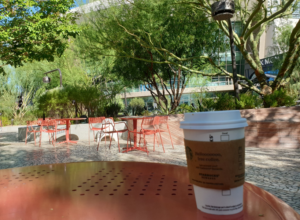 Sunday morning, I walked to the MGM Park to attend a full day workshop on Microsoft’s Azure Security Strategy + CISO. To my delight, I discovered that Devoteam’s 2020 strategy is completely aligned with Microsoft’s.
Sunday morning, I walked to the MGM Park to attend a full day workshop on Microsoft’s Azure Security Strategy + CISO. To my delight, I discovered that Devoteam’s 2020 strategy is completely aligned with Microsoft’s.
The main focus was Security, with three core elements:
- Azure Sentinel
- Compliancy
- Identity
Sunday evening, my colleagues Reginald De Palmenaer, Account Manager at Devoteam Belgium, and Geert Stragier, Managing Director of Devoteam Belux, accompanied me to a Belgian Beerhaus, the place to be for all Belgian attendees. Here you could network while enjoying some food and drinks.
July 15 & 16: day 1 & 2 of the conference
Corenote by Gavriella Schuster
Gavriella Schuster, CVP & One Commercial Partner at Microsoft, kicked off Microsoft Inspire + Microsoft Ready 2019. She explored how Microsoft partners can tap into the biggest market opportunities by leveraging technology along with trustworthy platforms and companies.
As mentioned before, Devoteam is already one step ahead as Microsoft focuses on:
- Modern Workplace:
- Business applications:
- Dynamics 365
- PowerApps
- Apps & infrastructure:
- Azure Cloud Migration, which is a big focus of Devoteam including Governance and Security
- Data & Artificial Intelligence:
Schuster thanked us at the end of her presentation, in the form of a virtual coffee which we could redeem at Starbucks. For the occasion, they created the ‘Microsoft Cloud Inspire Macchiato’.
Corenote by Judson Althoff
The second corenote speaker was Judson Althoff, EVP Worldwide Commercial Business at Microsoft, who defined our collective opportunity to deliver digital experiences for everyone. He gave a recap of the FY19 and proved Microsoft is cool again, a statement by Bloomberg.
A couple of examples how Microsoft supports good causes:
- Jobs for disabled people
- Affordable housing
- Teaching: e.g. the AI school initiative of BeCode in Belgium, sponsored by Microsoft
“Democratising digital is next”, emphasised Althoff:
- Equip everyone with digital skills
- Put AI to work to improve business processes
- Connect the frontline workers to the boardline
- Enable pro developers in order to enable the citizen developer community
- Use technology to solve the problems the planet faces
Finally, an amazing demo showed how technology improved the quality control for a famous soap company.
Later I met Hans Demeyer, one of the creators of breinpiraten.be. He is a supplier of inspiration and optimism, master NLP, an ethical brain hacker and the author of the book “Spelbrekers”. I learned a lot from him. Turns out you can rent HaaS (Hans as a Service). Meet Hans:

July 17: day 3 of the conference
Corenote by Satya Nadella
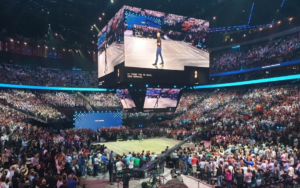 Satya Nadella, CEO of Microsoft, kicked off his keynote in a packed T-Mobile arena. He was the star of the conference, as people were standing in massive queues while entering the venue.
Satya Nadella, CEO of Microsoft, kicked off his keynote in a packed T-Mobile arena. He was the star of the conference, as people were standing in massive queues while entering the venue.
Satya discussed Microsoft’s mission, worldview and solution areas.
He encouraged all 17 million Microsoft partners worldwide to work together with the 100.000 Microsoft employees, to make sure all 7 billion humans could leverage the technology and digital potential.
“The key to all digital transformation is trust. Trust can’t be claimed it has to be earned, every single day”
Satya Nedella
CEO of Microsoft
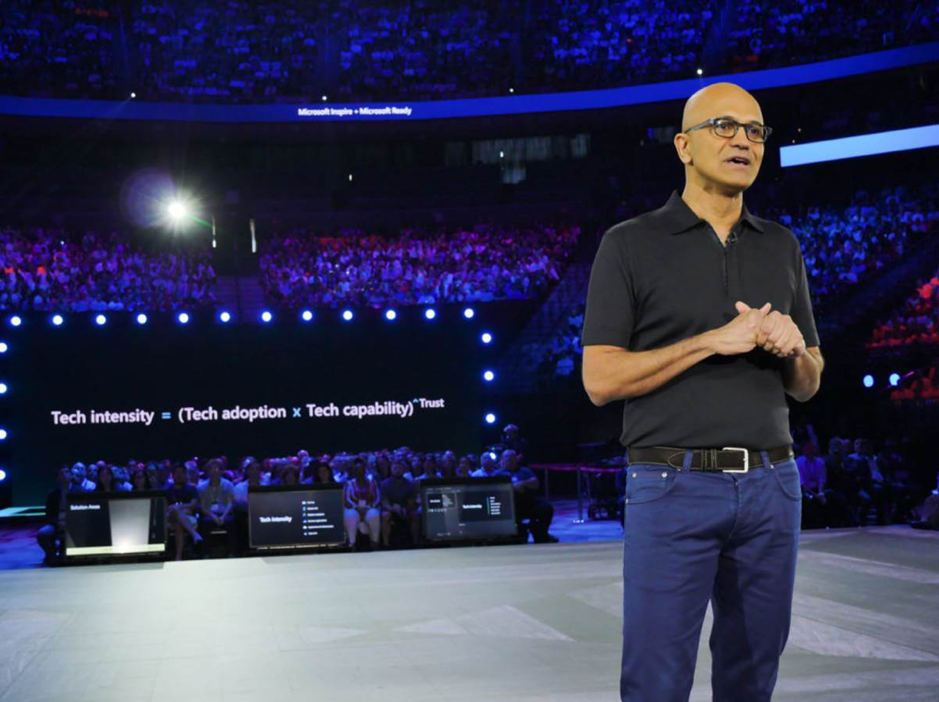
Github
36 million developers who use the Github platform in combination with Visual studio and other developer tools, are able to accomplish in a few days what used to take months.
As it is expected that over the next years 500 million new applications will be developed or will make their way to the cloud, the most important part to start this motion is all the hard work that has been done in the past can still be leveraged when moving to the cloud. This is why the Azure platform wants to be as open as possible. If your applications are running in Linux or Windows, no matter what database model they use, it should have a place in Azure.
SQL Hyperscale fits perfectly in this strategy, by removing a lot of the boundaries traditional relational databases have.
The Power platform
PowerBI, PowerApps and Flows are all about helping citizen developers create solutions faster, without the need to write code and getting to results quickly. There won’t be enough developers to write the estimated 500 million applications in the next years.
A stunning HoloLens demo
Microsoft has created a hologram that will transform someone into a digital speaker of another language. The digital version of Julia White, a company executive for Azure, appeared on stage to translate the corenote into Japanese. Microsoft used its Azure AI technologies and neural text-to-speech to make this possible. It takes recordings of White’s voice, in order to create a personalized voice signature, to make it sound like she’s speaking Japanese.
Microsoft has shown off holograms of people before, but the translation aspect is a step beyond what has been possible with the HoloLens. For now, this looks like a demonstration, and you’d need access to a Mixed Reality capture studio to even start to take advantage of this. Microsoft’s studios are equipped with lighting rigs and high-resolution cameras to capture a fully accurate digital hologram of someone, which isn’t something that can be done easily at home with a smartphone, just yet.
Still, Microsoft’s demonstration is certainly impressive and it speaks to the company’s ambitions with Azure, HoloLens, and beyond. The HoloLens 2 might be targeted at businesses for now, but Microsoft is attempting to build software and services that will scale to wherever augmented reality might end up heading.
Corenote by Brad Smith
Brad Smith, President of Microsoft, talked about how technology is creating challenges and opportunities around the world, as well as Microsoft’s role in the industry, as a company, and how we as individuals can help address these issues.
He discussed the responsibilities of tech companies to the society, with a focus on what technology should do, instead of the fear what technology can do, and on launching AI for the greater good, e.g. cultural heritage.
July 18: day 4 of the conference
The end of the convention has arrived, and this is the day where all subsidiaries take the time to present their goals, changes and announce the winners of the Microsoft Partner of the Year award. In Belgium Proximus received the award and in Luxembourg the award went to Devoteam. Congratulations to our Luxembourg team!
 Devoteam Luxembourg
Devoteam Luxembourg
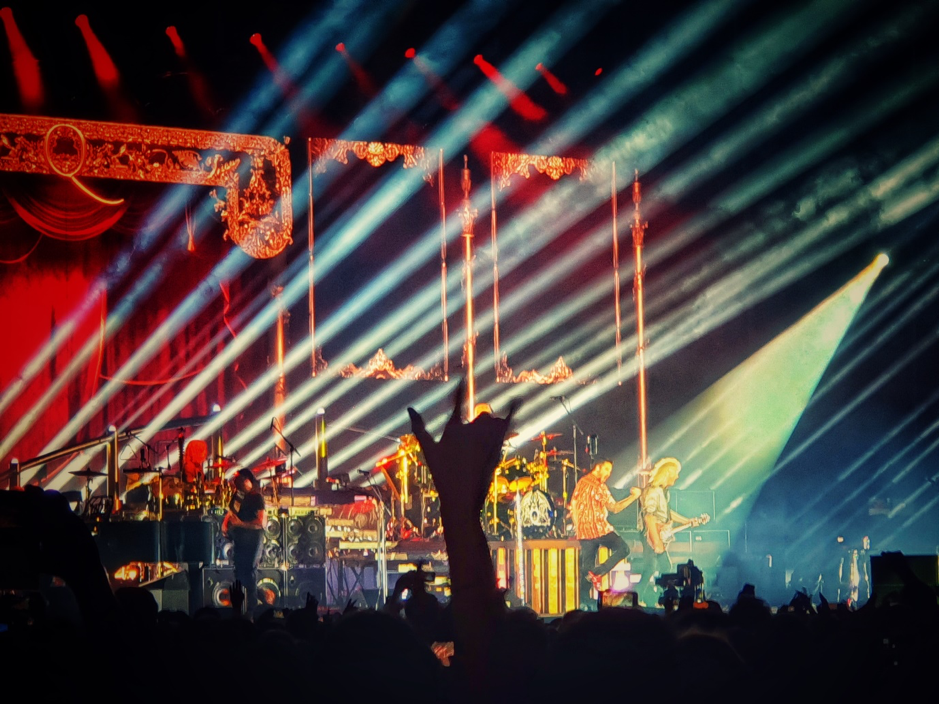 The last day was one big celebration #MicrosoftIsCool #MicrosoftRocks
The last day was one big celebration #MicrosoftIsCool #MicrosoftRocks
To conclude
As I look back on the past days, I noted that they consisted of networking at the Beerhaus and breakout sessions in the Mandalay Bay Convention Center. During the sessions I was intrigued by the focus on AI, Open Source, DevOps, Security and Leadership. The first focus points are more technical and in line with the Devoteam offering. We are also aligned on the last track, Leadership. It was not just about leadership in general but about emotional leadership, something I’m a true believer of. If you keep your employees happy, you will make yourself happy, meaning you make the company happy and achieve more results.
As a final conclusion I can say that it was worth the travel in terms of strategy, leadership and networking. Thank you to Microsoft for hosting the event, to my colleagues and to all people I met and with whom I had inspiring conversations.
Stay hydrated during this heat wave!
P.S. If you want to go in more detail, here you can watch the recordings of all sessions.
